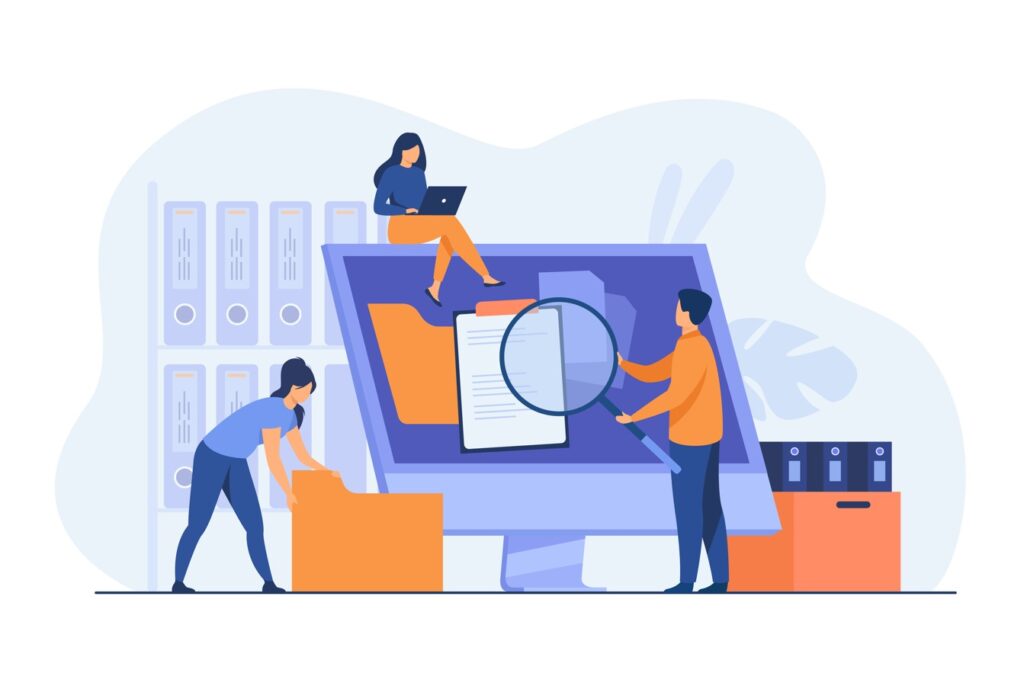How can a lawyer competently practice law without making their client’s eyes glaze over in confusion about the duty to preserve, detailed questions about the apps they used to communicate, steps to collect data defensibly, and document review? The answer requires understanding eDiscovery and not forgetting everything you learned about taking a case to trial.
STEP 1: REMEMBER DISCOVERY IS THE BACKBONE OF CIVIL LITIGATION
Collecting data and document review does not exist in the abstract. Electronically stored information must be relevant and proportional to a lawsuit under Federal Rule of Civil Procedure Rule 26(b). Parties can request ESI and state the form of production in their request under Rule 34. If no form is stated, the ESI must be produced in the form it is ordinarily maintained. A judge can issue sanctions for lost ESI if a party lost the data with the “intent to deprive.” The purpose of the rule is to provide uniformity in applying sanctions tests. In addition, it was supposed to stop parties from racing to the courthouse to file terminating sanctions motions if a custodian’s data was not collected.
STEP 2: REMEMBER YOUR ETHICAL DUTY AS A LAWYER
Let’s start with the basis: The Duty of Competency. ABA Model Rules of Professional Conduct, Rule 1.1 states: “A lawyer shall provide competent representation to a client. Competent representation requires the legal knowledge, skill, thoroughness, and preparation reasonably necessary for the representation.”
Technical competency does not stop there. Comment 8 to the Rules includes the duty to stay “abreast of changes in the law and its practice, including the benefits and risks associated with relevant technology.”
One can quickly see a hydra of problems erupt from client interviews, namely, not asking the right questions to the key players in a lawsuit. Take a heads-up view about relationships and the potential impact on evidence collection. Avoid that whiplash moment when you discover your client texted their business co-owner’s spouse about the company in serious legal trouble. Suddenly, you’ll need to consider raising the issue of marital privilege in any document review. Further, did you not collect the spouse’s data because you thought it was irrelevant?
The above situation indicates relying upon a client’s representations, missing data sources, and possibly failing to preserve fragile data. While it is natural for lawyers not to want to terrify their client with a litigation hold letter, the alternative of taking a passive role in not asking IT questions about a company’s underlying data can end badly.
Instead, formulate a solution workflow with checklists to ensure your representation is competent. Consider as a schematic the Electronic Discovery Reference Model. This evolving “model” shows the stages of eDiscovery. It is not just a journey from Point A to Z – many of the stages happen simultaneously. A lawyer cannot start with the collection of relevant data without thinking about trial presentation. What exactly is the lawsuit about? If you represent the plaintiff, what are the causes of action you must prove? If the defendant, what are the defenses? What evidence is needed to tell your client’s story? One does not begin eDiscovery without understanding the allegations in the case (or meeting one’s Rule 11 obligations to file a lawsuit in Federal court).
STEP 3: PUTTING YOUR PLAN INTO ACTION
No lawyer wants to end up as a 1980s after-school special about how they were sanctioned into oblivion by failing to collect ESI. Avoiding this requires understanding:
- Information Governance: How does your client store their data? What tech do they use?
- Identification: Locating potential sources of ESI & determining its scope, breadth & depth.
- Processing: Reducing the volume of ESI for review & analysis.
- Review: Evaluating ESI for responsiveness & privilege.
- Analysis: Evaluating ESI for content & context, including key patterns, topics, people & discussion.
- Production: Delivering ESI to others in appropriate forms & using appropriate delivery mechanisms.
Lawyers will learn new information as they work on their case. You could find out an individual used ephemeral messaging apps outside of the corporate client’s policies. Limit these “surprises” with effective custodian interviews. More importantly, use the right tool (and the person who knows how to use it) for the job. Whether collecting data or document review, use those specially designed apps to help you competently practice law.










